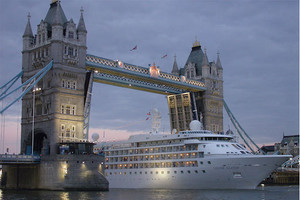
There’s virtually no part of the world today where a cruise ship doesn’t venture, but many regions operate on a seasonal basis, or there’s a time of year which is better for cruising than another. Here’s part one of our A-Z guide to the top cruising regions, and when to cruise.
Alaska
The Alaska season generally operates from late April to mid-September, but the best time to cruise there depends on several factors including your preferences. The warmest months are July and August, but these are also the months with the most mosquitoes, and they are the most crowded as they coincide with the North American summer holidays. If you like seeing autumn colours, the best time to cruise is September, and if budget is a consideration, the best time for bargain deals is at the very beginning and the very end of the season.
Antarctica
It’s the world’s coldest, driest, and windiest continent, and as the year-round the weather here is extremely cold and snowy, and the days can be very short, the cruising season is just four months long. Most ships venture here from late November through to the end of February, and sometimes early March, and each month has different attractions. Early in the season the birds are mating, while in December and January you’ll see hatching penguins and baby chicks, and enjoy longer daylight hours. Later in the season, however, you will likely see more whales.
Asia
You can cruise Asia all year round, but most itineraries tend to fall between September and April for a good reason. The northern hemisphere summer months are the hottest time of year with the highest chance of rain, which in countries such as Thailand and Vietnam can make touring difficult. What is more important, however, is that it’s also typhoon (cyclone) season between May and November, which will not only making cruising uncomfortable if you suffer from seasickness, but also have the potential to affect your itinerary with the chance of missing ports of call.
Australia
This is another region where cruises depart from Sydney and Brisbane year round, but seasonal changes can make a difference on the enjoyment of your cruise. In the southern states the summer months are hot, while the winter months are much cooler. In the north, however, it is largely warm all year, but the summer months are extremely hot and humid, with higher rainfall and a risk of cyclones. Due to the heat and the cyclone risk, the cruising season in the Kimberley region of Western Australia tends to fall in winter, between April and September.
Canada and New England
As the primary purpose of cruising here is “leaf peeping”, this cruising season occurs when the autumn leaves change colour. This is usually a six-to-eight week period falling between mid-September and the end of October, although the quality of the foliage can vary significantly from state-to-state. The best time to see the colours largely depends on weather and conditions. As most cruises also cover a large amount of territory, however, the safest bet is to cruise the last week of September and/or first week of October.
The Caribbean
Cruises also operate here all year, thanks to the region enjoying a warm to hot weather year-round climate. The winter months have warm days and cooler nights, while the summer months tend to be hotter and more humid with more rainfall. There is one key time to be aware of, however. Hurricane (cyclone) season extends from June to November, with the highest risk of a storm happening between August and October. These storms can produce rough seas, heavy rain, and cause disruption to an itinerary.
The Mediterranean
A growing number of lines operate cruises here year round, but the peak season still tends to fall between April and November. July and August are the busiest and hottest months in the region, with both ships and ports of call being very crowded. If you choose to cruise early or late in the season, things tend to be a lot quieter and the days can still be pleasantly warm, but be mindful that there are fewer daylight hours, and the nights can be chilly.
- By:
- Ben Hall









